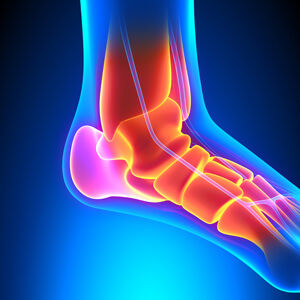The multiple causes of heel pain
There are many myths associated with the health of one’s feet. One of the most common is that heel pain is caused by a bone spur. This myth comes from the fact that many times a bone spur is visible on an X-ray, and is therefore thought to be associated with the pain. But in actuality, there are many conditions that can cause heel pain. Among them include:
- Plantar fasciitis: Plantar fasciitis occurs when the plantar fascia ligament becomes inflamed, often where it attaches in the heel. Most people know that athletes can get plantar fasciitis, but it is actually much more common in overweight middle-aged adults.
If someone suspects they have plantar fasciitis, he or she should work with their health care provider to confirm the extent of the injury. Then the health care provider can determine the best treatment option for that individual. Plantar fasciitis treatment generally includes anti-inflammatory medications, stretching exercises, applying ice packs, orthotics, taping, and/or cortisone injections. In some cases, surgery is an option.
- Stress fractures: Stress fractures are hairline or incomplete fractures of bone caused by repetitive micro-trauma. This is usually seen in a beginning athlete or exerciser, or when an activity is repeated frequently on a regular basis, such as running. Stress fractures can also be seen in certain work activities such as lifting and loading or any activity that increases stress on the foot. Stress fractures are also sometimes seen in post-menopausal women that have mild or undetected osteoporosis.
Treatment for stress fractures can consist of rest and rehabilitation, activity substitution, immobilization or orthotics (if related to poor foot mechanics). Occasionally, surgery will be needed.
- Sever’s disease: Sever’s disease is a painful disorder of the growth plate of the heel. This condition is usually seen in children ages 8-12 who are very active in sports. The constant pounding of the heel on the ground irritates the heel bone (otherwise known as the calcaneus) as the growth plate is closing.
It can also be related to growth spurts which cause tendon/bone imbalance. Treatment usually consists of rest, ice, stretching, activity avoidance and orthotics. Severe cases may be treated by immobilization in a boot or a cast for a period of time.
Cysts and — in rare instances — a neoplasm or tumor can be the source of heel pain too. In general, you should see a health care provider about your heel pain if it continues when you are not walking or standing. You should also make an appointment if it lasts more than a few weeks — even after trying other treatments.
